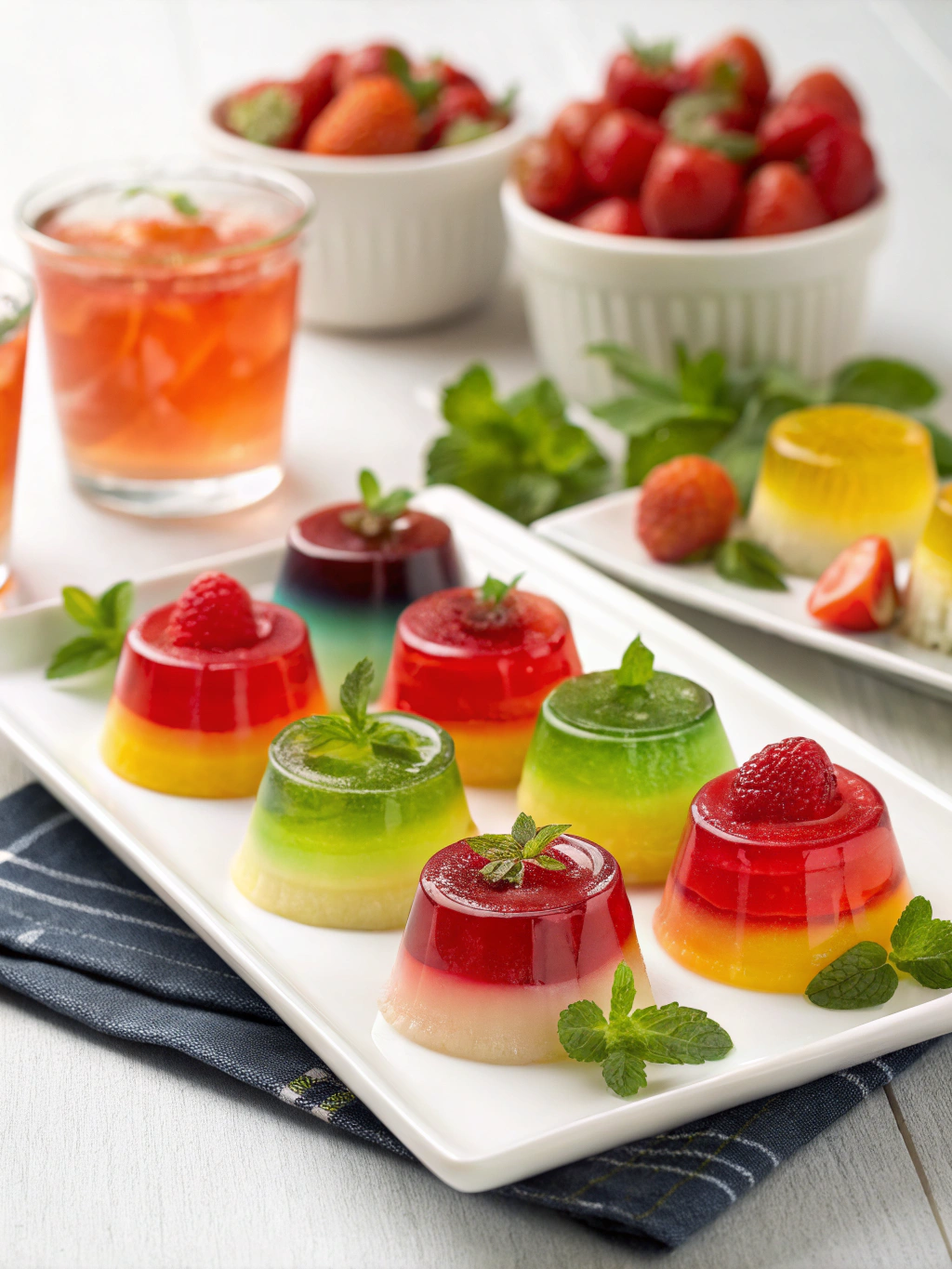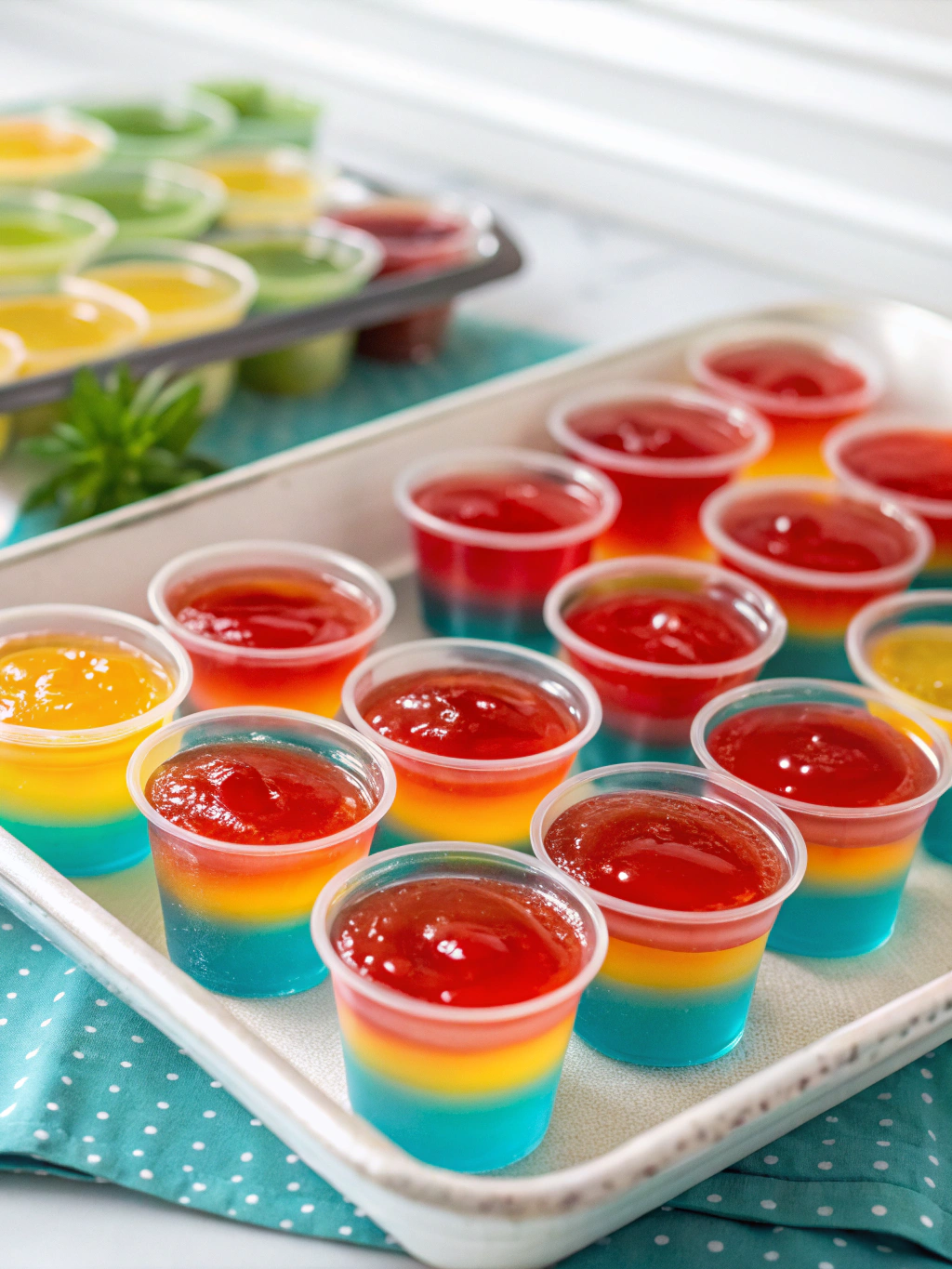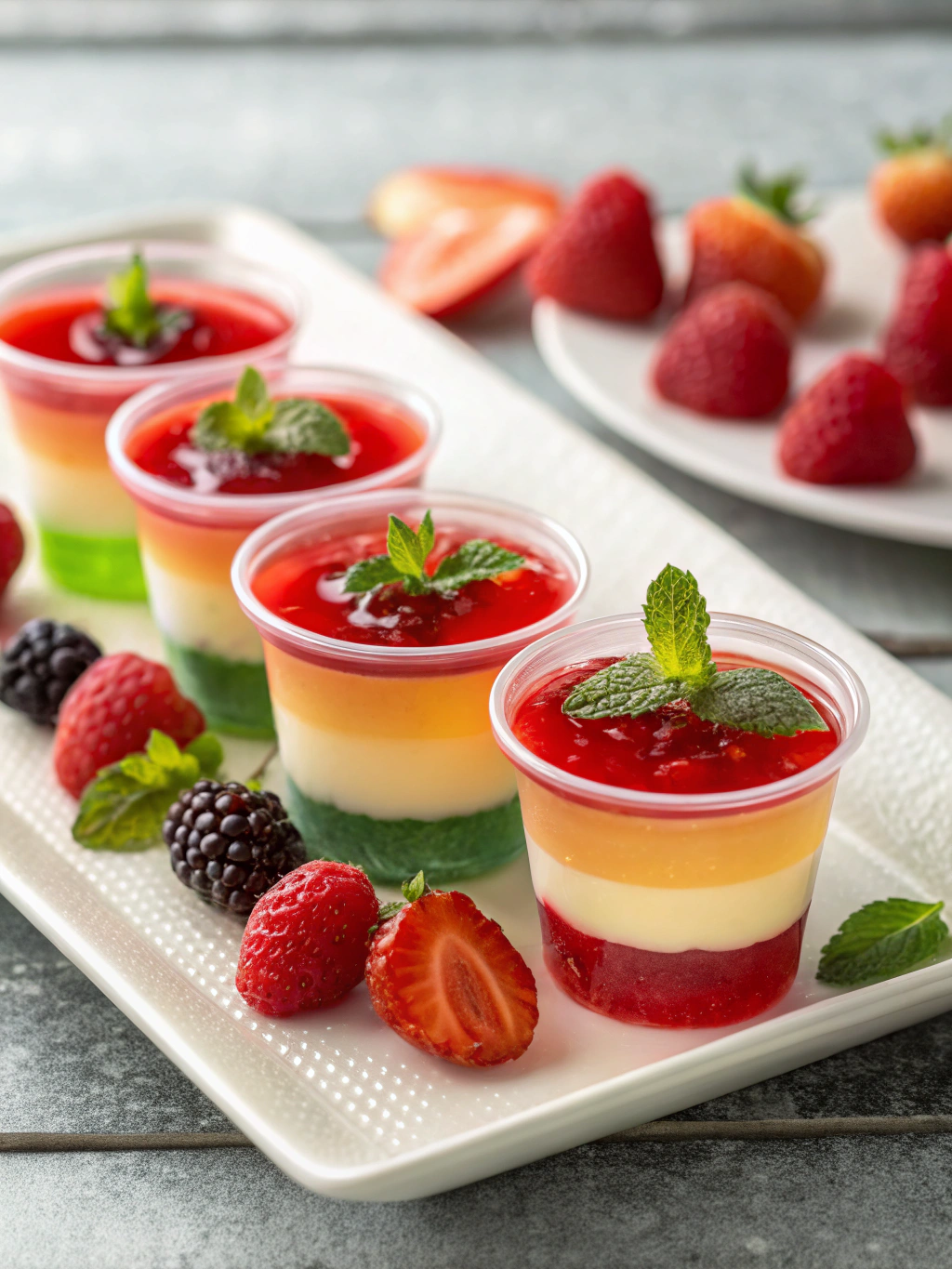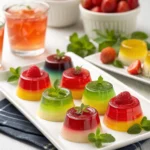Last Updated on March 31, 2025 by recipeinspire
Table of Contents
Introduction

Importance of Turkey Injection for Flavor Enhancement
Why Injecting Your Turkey Matters
Injecting a turkey with a flavorful marinade is a game-changer for several reasons:
- Deep Flavor Penetration: Unlike surface seasonings, injections infuse flavors deep into the meat, ensuring every bite is flavorful.
- Enhanced Moisture: Injecting helps retain moisture, especially in breast meat, which tends to dry out during cooking.
- Even Distribution of Flavors: It allows for a more uniform distribution of flavors throughout the turkey.
- Customization: You can tailor the flavor profile to your liking, from classic herbs to spicy Cajun blends.
The Science Behind Flavorful Turkey
- Marinade Absorption: The injection method allows the turkey to absorb the marinade more effectively than traditional marinating.
- Tenderizing Effect: Certain ingredients in the marinade, like acids or enzymes, can tenderize the meat, enhancing its texture.
Maximizing Flavor Impact
To truly elevate your turkey, consider these tips:
- Choose the Right Ingredients: Opt for a balance of flavors – salty, sweet, acidic, and umami.
- Inject Early: For deeper flavor penetration, inject the turkey several hours, or even a day, before cooking.
- Even Distribution: Inject the marinade at different points to ensure the flavor spreads evenly.
Expert Insights and Resources
For more insights on perfecting your turkey injection recipe, explore resources like The Spruce Eats, which offers a variety of recipes and techniques tailored for different preferences.
Brief Overview of the Injection Process
Understanding the Basics of Turkey Injection
Injecting a turkey is a straightforward process, but it requires attention to detail to achieve the best results. Here’s a brief overview:
- Selecting the Injector: Choose a quality injector, a syringe-like tool with a needle, designed for penetrating turkey meat.
- Preparing the Marinade: Your marinade should be liquid enough to pass through the injector’s needle. Avoid large chunks that can clog the needle.
Steps for Injecting Your Turkey
- Mixing the Marinade: Combine your ingredients, ensuring they are finely blended. For recipe ideas and inspiration, consider exploring resources like The Spruce Eats.
- Filling the Injector: Draw the marinade into the injector, being careful to avoid air bubbles.
- Injecting the Meat: Insert the needle into different parts of the turkey, especially the breasts and thighs. Inject slowly to allow the marinade to disperse.
- Even Distribution: Move the needle to different angles within the same insertion point for even distribution without creating too many holes in the meat.
Tips for Effective Injection
- Avoid Over-Injection: Too much liquid can cause the meat to become soggy. Aim for a balance.
- Cleanliness is Key: Always clean your injector before and after use to maintain hygiene.
- Marinade Temperature: Ensure your marinade is at a safe, injectable temperature – not too hot.
Post-Injection Steps
- Resting the Turkey: After injection, let the turkey rest to allow the flavors to meld. This can be done several hours before cooking or even overnight.
- Cooking Considerations: Remember, the injection flavors will influence your cooking method and choice of accompanying dishes.
Choosing the Right Ingredients
Types of Ingredients Suitable for Turkey Injection
Selecting the Right Ingredients for Maximum Flavor
When it comes to injecting your turkey, choosing the right ingredients is crucial for enhancing flavor and tenderness. Here’s a breakdown of the types of ingredients that work best:
- Liquids for Base: Use broths, wines, or juices as the base of your marinade. They provide moisture and carry flavors into the meat.
- Fats for Moisture: Incorporate fats like melted butter or olive oil to add richness and help retain moisture in the turkey.
- Acids for Tenderizing: Ingredients like lemon juice or vinegar can tenderize the meat and add a bright flavor profile.
- Seasonings for Depth: Use herbs, spices, and aromatics like garlic or onion powder to deepen the flavor. Ensure they are finely ground to pass through the injector needle.
Combining Ingredients for a Balanced Marinade
- Balance is Key: Aim for a harmonious blend of salty, sweet, acidic, and umami flavors.
- Experiment with Flavors: Don’t be afraid to try different combinations to find what works best for your taste.
Expert Tips for Preparing Your Marinade
- Strain for Smoothness: Ensure your marinade is free of chunks or large particles to prevent clogging the injector.
- Warm for Ease: Slightly warming the marinade can make it easier to inject.
The Role of Each Ingredient in Flavor and Tenderness
Understanding Ingredient Functions
Each ingredient in a turkey injection marinade plays a specific role in enhancing both the flavor and tenderness of the meat. Let’s delve into the purpose of these key ingredients:
- Liquids (Broths, Wines, Juices):
- Hydration: They provide essential moisture, ensuring the turkey remains juicy.
- Flavor Carrier: These liquids help distribute flavors evenly throughout the meat.
- Fats (Butter, Olive Oil):
- Moisture Retention: Fats help lock in the natural juices of the turkey, preventing it from drying out during cooking.
- Flavor Enhancement: Fats carry fat-soluble flavors from spices and herbs, enriching the overall taste.
- Acids (Lemon Juice, Vinegar):
- Tenderizing: Acids can gently break down proteins, making the meat more tender.
- Flavor Balance: They add a bright, tangy note, balancing the richness of the fats and the savoriness of the broths.
- Seasonings (Herbs, Spices, Aromatics):
- Depth of Flavor: These add complexity and depth, elevating the turkey beyond its natural flavor.
- Customization: Seasonings allow for endless flavor combinations, catering to personal preferences.
Maximizing the Impact of Ingredients
- Proper Proportions: Balancing these ingredients is key. Too much acid can overpower other flavors, while insufficient fat might not carry flavors effectively.
- Quality Matters: Opt for high-quality, fresh ingredients for the best results.
Top Turkey Injection Recipes

Classic Herb and Butter Injection
The Essence of Traditional Flavors
The Classic Herb and Butter Injection is a timeless choice for enhancing your turkey. This method infuses the meat with rich, savory flavors, ensuring a moist and delicious result. Let’s explore the components of this classic injection:
- Base Ingredients:
- Butter: Acts as the fat base, adding richness and aiding in moisture retention.
- Herbs: Traditional herbs like Italian seasoning, garlic powder, and onion powder provide a depth of flavor.
- Preparation and Injection:
- Melt the Butter: Start by melting the butter, ensuring it’s liquid enough for easy injection.
- Mix in the Herbs: Combine the melted butter with your chosen herbs and seasonings.
- Injecting the Turkey: Use a meat injector to infuse this flavorful liquid into the turkey, focusing on the breasts and thighs for even flavor distribution.
Tips for a Perfect Herb and Butter Injection
- Even Distribution: Ensure you inject at various points for a uniform flavor throughout the turkey.
- Avoid Clogging: Strain the mixture if necessary to prevent any herb particles from clogging the injector.
Enhancing the Flavor Profile
- Additional Seasoning Options: Consider adding sea salt to elevate the overall taste and tenderize the meat.
- Liquid Variations: While butter is the classic choice, you can also explore using apple cider or chicken broth for a different twist.
Spicy Cajun Injection
Unleashing Bold Flavors
The Spicy Cajun Injection is a vibrant and flavorful choice for those who love a bit of heat and complexity in their turkey. This injection combines a variety of ingredients to create a rich, spicy, and deeply flavored marinade.
- Key Ingredients:
- Worcestershire Sauce & Liquid Crab Boil: These provide a unique, savory base to the marinade.
- Apple Cider & Honey: They balance the heat with a touch of sweetness.
- Beer: Adds depth and a slight bitterness, enhancing the overall flavor profile.
- Creole Seasoning & Cayenne: The heart of the Cajun flavor, offering heat and a blend of spices.
- Preparation and Injection:
- Blend for Smoothness: Combine all ingredients in a blender until smooth, ensuring the marinade is fine enough for injection.
- Injecting the Turkey: Focus on injecting the marinade into the breast, thigh, back, wings, and legs for an even distribution of flavor.
Tips for a Successful Cajun Injection
- Marinade Consistency: Ensure the marinade is not too thick to prevent clogging the injector.
- Balancing Flavors: Adjust the level of heat to your preference by modifying the amount of Creole seasoning and cayenne.
Cooking Considerations
- Roasting Techniques: After injecting, roast the turkey as per your preferred method, keeping in mind the bold flavors of the marinade.
- Pairing with Sides: Choose side dishes that complement or mellow the spicy Cajun flavors.
Sweet and Savory Apple Cider Injection
A Harmonious Blend of Flavors
The Sweet and Savory Apple Cider Injection is a delightful combination that brings a unique twist to your traditional turkey. This injection marries the tartness of apple cider with the richness of butter, infused with aromatic herbs for a truly mouthwatering experience.
- Core Ingredients:
- Apple Cider: Provides a sweet and tart base, infusing the turkey with a subtle fruitiness.
- Butter: Adds richness and helps to distribute flavors evenly throughout the meat.
- Fresh Herbs (Rosemary, Thyme, Sage): These herbs complement the apple cider with their earthy and aromatic qualities.
- Preparation and Injection:
- Herb-Infused Butter: Melt the butter and simmer with the herbs to infuse their flavors.
- Combine with Apple Cider: Mix the herb-infused butter with apple cider, creating a harmonious injection liquid.
- Injecting the Turkey: Carefully inject the mixture into the turkey, targeting the breasts and thighs for maximum flavor penetration.
Tips for a Perfect Injection
- Cool Before Injecting: Ensure the mixture is at room temperature before injecting to avoid cooking the meat prematurely.
- Strategic Injection Points: Inject at different angles in each area to spread the flavor while minimizing punctures in the skin.
Enhancing Your Turkey Experience
- Resting Time: After injection, let the turkey rest in the refrigerator overnight to allow the flavors to meld.
- Roasting Considerations: Roast the turkey with a bed of aromatic vegetables like carrots, celery, and leeks to complement the apple cider flavors.
Garlic and Lemon Infusion
A Zesty and Aromatic Delight
The Garlic and Lemon Infusion is a classic combination that brings a bright and zesty flavor to your turkey. This infusion is perfect for those who appreciate the tangy zest of lemon balanced with the aromatic punch of garlic, creating a delightful taste experience.
- Key Ingredients:
- Lemon Juice: Provides a fresh, citrusy base, infusing the turkey with a tangy flavor.
- Garlic: Adds a robust and aromatic quality, enhancing the overall savoriness.
- Butter or Olive Oil: Acts as a carrier for the flavors, ensuring they permeate the meat evenly.
- Preparation and Injection:
- Create the Infusion: Mix lemon juice with finely minced or powdered garlic and your choice of butter or olive oil.
- Injecting the Turkey: Carefully infuse this mixture into the turkey, focusing on the breasts and thighs to ensure a well-rounded flavor profile.
Tips for a Perfect Infusion
- Avoid Overpowering: Balance the lemon and garlic to ensure one does not overpower the other.
- Strain for Smoothness: Ensure the infusion is free of large garlic pieces to prevent clogging the injector.
Enhancing Your Culinary Experience
- Resting Time: Let the turkey rest after injection to allow the flavors to meld and penetrate the meat.
- Roasting Techniques: Consider roasting methods that complement the zesty and aromatic nature of the infusion, such as using a herb rub or a citrus-based glaze.
Rich Beer and Honey Blend
A Unique Fusion of Flavors
The Rich Beer and Honey Blend is an exceptional choice for those looking to add a unique twist to their turkey. This injection combines the deep, malty flavors of beer with the natural sweetness of honey, creating a rich and complex taste profile.
- Key Ingredients:
- Beer: Provides a robust and earthy base, adding depth to the turkey’s flavor.
- Honey: Balances the beer’s bitterness with its natural sweetness and adds a subtle glaze-like quality.
- Butter or Olive Oil: Ensures the smooth distribution of flavors throughout the meat.
- Preparation and Injection:
- Create the Blend: Mix your chosen beer with honey and a base of melted butter or olive oil.
- Injecting the Turkey: Carefully infuse this rich mixture into the turkey, targeting key areas like the breasts and thighs for an even flavor distribution.
Tips for a Perfect Blend
- Beer Selection: Choose a beer that complements the honey’s sweetness, such as a lager or ale.
- Balance of Flavors: Ensure the honey and beer are in harmony, so neither overpowers the other.
Enhancing Your Culinary Creation
- Resting Time: Allow the turkey to rest after injection to let the flavors meld together.
- Roasting Techniques: Consider roasting methods that enhance the beer and honey flavors, like slow roasting or using a herb rub.
Injection Techniques and Tips
How to Properly Inject Your Turkey
Mastering the Art of Turkey Injection
Injecting your turkey is a crucial step in ensuring a flavorful and juicy feast. Here’s a step-by-step guide to doing it right:
- Choose the Right Injector: Opt for a quality meat injector, preferably with a stainless steel needle for durability and ease of cleaning.
- Prepare Your Marinade: Ensure your marinade is free of large chunks to prevent clogging. It should be a balance of flavors to complement the turkey.
Injection Technique
- Start with a Thawed Turkey: Make sure your turkey is completely thawed for even cooking and effective marinade absorption.
- Strategic Injection Points:
- Inject into the thickest parts of the turkey, such as the breasts, thighs, and legs.
- Aim to distribute the marinade evenly for consistent flavor.
- Depth of Injection:
- Insert the needle deep into the meat, but not so far that you puncture the opposite side.
- Withdraw the needle slightly as you inject the marinade, creating a pocket of flavor.
- Amount of Marinade:
- Inject slowly, allowing the marinade to disperse. Over-injecting can cause the meat to become soggy.
Post-Injection Tips
- Let It Marinate: After injecting, let the turkey rest in the refrigerator for several hours, ideally overnight, to allow the flavors to meld.
- Avoid Contamination: Clean the injector thoroughly before and after use to maintain hygiene.
Tips for Even Distribution of Flavor
Ensuring Every Bite is Flavorful
Achieving an even distribution of flavor when injecting your turkey is crucial for a uniformly delicious meal. Here are some expert tips to help you master this technique:
- Multiple Injection Points:
- Inject in several places, especially in the thicker parts like the breasts and thighs.
- Aim for deep muscle tissues without piercing through to the other side.
- Consistent Injection Amount:
- Use about 1 to 2 teaspoons of marinade per injection site.
- This consistency helps prevent over-saturation in one area and under-flavoring in another.
- Varied Injection Angles:
- Change the angle of injection at each site to spread the marinade throughout the meat.
- This technique allows the marinade to disperse more evenly.
Marinade Preparation
- Smooth Consistency: Ensure your marinade is finely blended to avoid clogging the injector.
- Balanced Flavor Profile: Choose a marinade that complements the turkey’s natural flavor without overpowering it.
Post-Injection Process
- Resting Time: After injecting, let the turkey rest in the refrigerator for several hours, ideally overnight, to allow the flavors to penetrate deeply.
- Safe Handling: Always clean your injector thoroughly before and after use to prevent cross-contamination.
Cooking Your Turkey
Roasting vs. Grilling: Adjusting Your Method
Choosing the Right Cooking Technique
When it comes to cooking a turkey, the method you choose can significantly impact the flavor and texture. Roasting and grilling are two popular methods, each offering unique benefits:
- Roasting:
- Traditional Approach: Roasting is the classic way to cook a turkey, typically done in an oven.
- Even Cooking: It allows for even heat distribution, ensuring the turkey cooks thoroughly.
- Flavor Profile: Roasting enhances the natural flavors of the turkey and is ideal for a more traditional taste.
- Grilling:
- Outdoor Cooking: Grilling is a great way to cook outside and add a unique flavor.
- Direct Heat: It involves cooking the turkey over direct heat, which can infuse a smoky flavor.
- Considerations: Grilling is best for smaller turkeys or turkey parts to ensure even cooking.
Adjusting Your Cooking Method
- Temperature Control:
- Roasting: Maintain a consistent oven temperature, usually between 325°F to 350°F.
- Grilling: Manage the grill’s heat to avoid burning or undercooking.
- Cooking Time:
- Roasting: Requires a longer cooking time, depending on the size of the turkey.
- Grilling: Generally quicker than roasting, but requires more attention to prevent charring.
Additional Tips
- Marinade and Seasoning: Both methods benefit from a flavorful marinade or rub. Injecting the turkey can enhance the flavor, especially when grilling.
- Monitoring: Use a meat thermometer to ensure the turkey reaches the safe internal temperature of 165°F.
Ensuring Safety and Perfect Doneness
Key Steps for a Safe and Perfectly Cooked Turkey
Cooking a turkey to perfection involves more than just following a recipe; it’s about ensuring safety and achieving the ideal doneness. Here are essential tips to help you achieve both:
- Safe Thawing:
- Refrigerator Thawing: Allow ample time for the turkey to thaw in the refrigerator.
- Cold Water Bath: If short on time, use a cold water bath, changing the water every 30 minutes.
- Temperature Monitoring:
- Use a Meat Thermometer: This is crucial for checking the internal temperature of the turkey.
- Safe Internal Temperature: The turkey is safe to eat when it reaches an internal temperature of 165°F.
- Even Cooking:
- Roasting: Cook at a consistent temperature, usually between 325°F to 350°F.
- Grilling: Manage the grill’s heat to cook the turkey evenly without burning.
Additional Safety Tips
- Avoid Cross-Contamination: Use separate utensils and cutting boards for raw and cooked turkey.
- Proper Handling: Wash hands thoroughly before and after handling raw turkey.
Achieving Perfect Doneness
- Resting the Turkey: Let the turkey rest for about 20 minutes after cooking. This allows the juices to redistribute, ensuring a moist and flavorful meat.
- Avoid Overcooking: Overcooked turkey can be dry. Remove the turkey from the heat source as soon as it reaches the safe internal temperature.
Pairing with Side Dishes
Recommended Side Dishes for Each Type of Injected Turkey
Pairing the Perfect Sides with Your Flavor-Injected Turkey
Choosing the right side dishes to complement your flavor-injected turkey can elevate your meal to new culinary heights. Here’s a guide to pairing side dishes with various types of injected turkeys:
- Classic Herb and Butter Injection:
- Roasted Vegetables: Enhance the herbaceous notes with a medley of roasted root vegetables.
- Garlic Mashed Potatoes: A perfect match for the buttery richness of the turkey.
- Spicy Cajun Injection:
- Cornbread: Balances the heat with its sweet, buttery flavor.
- Coleslaw: The cool, crisp texture provides a refreshing contrast to the spicy turkey.
- Sweet and Savory Apple Cider Injection:
- Cinnamon Roasted Sweet Potatoes: Complements the sweet notes of the apple cider.
- Brussels Sprouts with Bacon: The savory bacon pairs well with the sweet and tart flavors.
- Garlic and Lemon Infusion:
- Grilled Asparagus: The charred, smoky flavor works well with the zesty lemon.
- Rice Pilaf: A light and fluffy side that absorbs the garlic and lemon flavors beautifully.
- Rich Beer and Honey Blend:
- Baked Beans: Their sweetness echoes the honey while complementing the depth of the beer.
- Creamy Polenta: A smooth and creamy texture to balance the rich flavors of the turkey.
Additional Considerations
- Balance of Flavors: Choose sides that balance rather than compete with the flavors of the turkey.
- Texture Variety: Include a mix of textures, from creamy to crunchy, for a well-rounded meal.
Balancing Flavors Between the Turkey and Sides
Creating a Harmonious Thanksgiving Feast
Balancing the flavors between your turkey and side dishes is essential for a cohesive and enjoyable Thanksgiving meal. Here’s how to achieve that perfect harmony:
- Complementing Flavors:
- Identify Dominant Flavors: Determine the dominant flavors in your turkey injection – whether it’s spicy, sweet, savory, or herby.
- Choose Complementary Sides: Select side dishes that complement these flavors without overpowering them.
- Contrasting Textures and Tastes:
- Texture Variety: Balance creamy dishes with crunchy or crispy sides.
- Taste Contrasts: Pair rich, heavy flavors with lighter, refreshing sides to avoid flavor fatigue.
- Culinary Principles of Pairing:
- Flavor Network: According to a study in PubMed Central, certain flavor compounds are shared across different ingredients, influencing how well they pair together.
- Cultural Pairing Practices: Western cuisines often pair ingredients with shared flavor compounds, while East Asian cuisines tend to avoid this.
Examples of Balanced Pairings
- For a Spicy Cajun Turkey:
- Cooling Sides: Creamy coleslaw or a fresh green salad can provide a refreshing contrast.
- Simple Starches: Plain rice or bread can help temper the heat.
- For a Sweet Apple Cider Turkey:
- Savory Sides: Roasted vegetables or a savory stuffing can offset the sweetness.
- Crisp Salads: A salad with a tangy vinaigrette can cut through the richness.
- For a Rich Beer and Honey Turkey:
- Light Sides: Steamed green beans or a citrusy salad can balance the richness.
- Subtle Flavors: Avoid overly spiced or flavored sides that might clash with the turkey’s robust taste.
Additional Considerations
- Cohesive Theme: Ensure all dishes fit within a chosen culinary theme or style for a cohesive meal.
- Seasonal Ingredients: Incorporate seasonal produce for freshness and harmony with the turkey’s flavors.
FAQs
How Soon Should You Inject a Turkey Before Cooking?
Timing Your Turkey Injection for Optimal Flavor
Injecting your turkey with a flavorful marinade is a fantastic way to enhance its taste and juiciness. However, timing is crucial to maximize the benefits of this technique. Here’s what you need to know:
- Advance Injection:
- Ideal Time Frame: Injecting the turkey 24 to 48 hours before cooking is recommended.
- Flavor Absorption: This time allows the flavors to fully penetrate and distribute throughout the meat.
- Minimum Time Before Cooking:
- At Least a Few Hours: If pressed for time, injecting at least a few hours before cooking can still be effective.
- Flavor Development: Even a short marination period can improve the turkey’s flavor and moisture content.
- Considerations for Different Marinades:
- Oil or Butter-Based Marinades: These can be injected closer to cooking time as they adhere well to the meat.
- Water-Based Marinades: Require more time for flavors to infuse into the turkey.
Additional Tips
- Even Distribution: Inject the marinade in multiple locations and at different angles for even flavor distribution.
- Avoid Over-Injection: Too much marinade can make the meat soggy. Aim for balance.
What is Injected into a Butterball Turkey?
Understanding the Ingredients in a Butterball Turkey
Butterball turkeys are known for their juiciness and flavor, partly due to the solution injected into them before they are sold. Here’s what typically goes into a Butterball turkey:
- Solution Ingredients:
- Water: Acts as the primary base of the injection solution.
- Salt: Enhances flavor and works as a preservative.
- Spices and Flavorings: These may vary but generally include a blend of traditional poultry seasonings.
- Natural Flavors: Enhance the turkey’s taste without adding artificial flavors.
- Purpose of Injection:
- Moisture Retention: The solution helps the turkey retain moisture during cooking, resulting in a juicier end product.
- Flavor Enhancement: The spices and seasonings in the solution infuse the turkey with additional flavors.
_Health and Dietary Considerations**
- Sodium Content: Due to the salt in the solution, Butterball turkeys may have a higher sodium content, which is a consideration for those on low-sodium diets.
- Allergen Information: Always check the label for specific allergens, especially if you have dietary restrictions or allergies.
Should I Brine and Inject My Turkey?
Combining Brining and Injecting for the Ultimate Turkey
Deciding whether to brine and inject your turkey can be a culinary conundrum. Here’s what you need to know to make an informed decision:
- Understanding Brining:
- Brining Process: Soaking the turkey in a saltwater solution, often with added herbs and spices.
- Purpose: Brining helps to moisten and flavor the meat from the outside in.
- Understanding Injection:
- Injection Process: Using a syringe to infuse flavor directly into the meat.
- Purpose: Injection targets deeper muscle tissues for flavor and moisture.
_Combining the Two Methods**:
- Enhanced Flavor and Moisture:
- Synergistic Effect: Combining brining and injecting can maximize both flavor and juiciness.
- Layered Flavoring: Brining adds surface-level flavor, while injecting introduces deeper, more intense flavors.
- Considerations for Brining and Injecting:
- Salt Content: Be mindful of the overall salt content, as both methods use salt.
- Flavor Balance: Choose complementary flavors for the brine and injection to avoid overpowering the turkey.
_Expert Recommendations**:
- Culinary Experts’ Views: While specific sources were not found, culinary experts generally recommend experimenting with both methods to find the perfect balance for your taste preferences.
- Personal Preference: Consider your flavor preferences and the desired outcome for your turkey.
_Additional Tips**:
- Timing: If brining, do so for 12-24 hours, followed by injecting a few hours before cooking.
- Flavor Combinations: Experiment with different herbs and spices in both the brine and injection for unique flavor profiles.
Turkey Injection: Worth It or Not?
Evaluating the Benefits of Turkey Injection
The question of whether turkey injection is worth the effort is a common one among cooks, especially during the holiday season. Let’s delve into the pros and cons:
- Pros of Turkey Injection:
- Flavor Enhancement: Injecting a turkey allows flavors to penetrate deep into the meat, ensuring a more flavorful experience.
- Moisture Retention: It helps in retaining moisture, especially in leaner parts like the breast, making the turkey juicier.
- Customization: Allows for a wide range of flavor combinations, catering to individual tastes.
- Cons of Turkey Injection:
- Additional Prep Time: It requires extra preparation time and effort.
- Risk of Overdoing It: There’s a risk of overpowering the natural flavors of the turkey if not done carefully.
Expert Opinions and Resources**
- Culinary Experts’ Views: While specific sources discussing the worth of turkey injection were not found, culinary discussions, such as those on Food52, often highlight the significant impact of injection on flavor and juiciness.
- Personal Preference: Ultimately, the decision depends on personal preference and the desired outcome for the turkey.
Making the Decision**
- Consider Your Audience: Think about the preferences of those you are cooking for.
- Experiment: Try injecting a smaller portion of the turkey first to gauge the impact on flavor and texture.
Conclusion
Recap of the Importance of Turkey Injection
Highlighting the Benefits of Turkey Injection
Injecting a turkey is more than just a cooking technique; it’s a way to ensure a memorable and delicious meal. Here’s a recap of why turkey injection is so important:
- Deep Flavor Penetration:
- Reaches the Core: Injecting marinade deep into the turkey ensures that every bite is packed with flavor.
- Beyond Surface Seasoning: Unlike external rubs, injection brings flavors to the innermost layers of the turkey.
- Enhanced Moisture:
- Juiciness Throughout: The injected marinade helps retain moisture, making even the leaner parts like the breast succulent.
- Prevents Drying Out: Especially crucial during long cooking processes like roasting.
- Customization of Flavors:
- Personal Touch: Injection allows for a wide range of flavor combinations, catering to individual tastes and preferences.
- Versatility: From traditional herb infusions to exotic spicy blends, the possibilities are endless.
Encouraging Readers to Experiment with Flavors
Unleashing Culinary Creativity
Cooking is an art, and experimenting with flavors is its essence. Here’s why you should embrace the adventure of flavor experimentation:
- Discover New Tastes:
- Expand Your Palate: Trying new flavor combinations can lead to delightful discoveries.
- Break the Monotony: Move beyond traditional recipes and explore diverse culinary cultures.
- Enhance Cooking Skills:
- Learn by Doing: Experimentation is a hands-on way to improve your cooking techniques.
- Understand Ingredients Better: Discover how different flavors interact and complement each other.
- Personalize Your Meals:
- Tailor to Your Taste: Customize recipes to suit your preferences or dietary needs.
- Create Signature Dishes: Develop unique recipes that reflect your personal style.
_Inspiration from Experts**
- Culinary Resources: Websites like Food52 offer a plethora of ideas and inspirations for flavor experimentation in cooking.
- Professional Chefs’ Advice: Many chefs encourage home cooks to be bold and creative with flavors.
_Embracing Experimentation**
- Start Small: Begin with tweaking familiar recipes before venturing into uncharted territories.
- Keep an Open Mind: Be ready to embrace unexpected outcomes and learn from them.
Encourage the joy of exploration! Take a moment to discover the incredible posts shared by others:
- What is the Best Cut of Beef for Al Pastor? – A Comprehensive Guide
- The Ultimate Guide to Butter Swim Biscuits
- Bomb Meatloaf Recipe: A Delicious and Easy-to-Make Dish for Any Occasion
- Why Milk Instead of Water in Meatloaf?
- How to Reduce the Tangy Taste in Rasam?









1 thought on “Mastering the Art of Turkey Injection Recipe: Flavorful and Techniques”
Comments are closed.